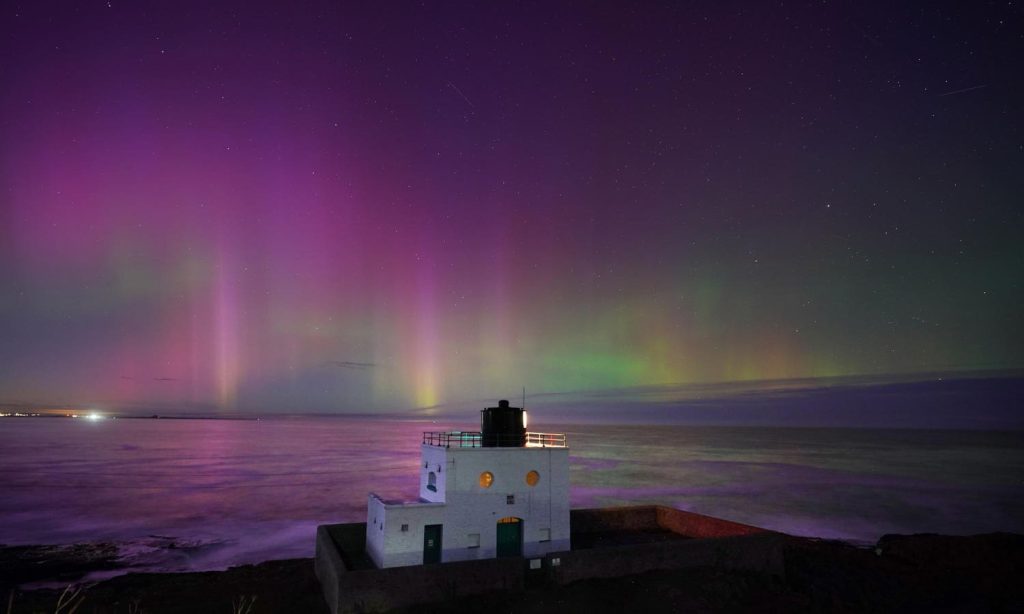The northern lights—also called the aurora borealis—could be visible in northern U.S. states after a spike in magnetic activity on the sun on Thursday, November 9.
In comes in the wake of a correctly predicted stunning display last Sunday when a strong geomagnetic storm produced aurora in the night skies for northern U.S. states and Europe. Aurora was glimpsed as far south as Greece and Italy.
According to SpaceWeather.com, the incoming geomagnetic storm won’t be quite as strong as last weekend’s G3-class event, but it could still produce G2 levels of activity.
That could be enough to make aurora visible in northern U.S. states from New York to Washington, said the website.
It could also mean a second scientific rocket launch by NASA in Alaska.
Saturday Night Lights
That assertion is based on models of space weather produced independently by both the National Oceanic and Atmospheric Administration and NASA. The former’s Space Weather Prediction Center has issued a three-day forecast that predicts for Saturday a G1 magnetic storm from 15:00 UTC (10:00 a.m. EST) with a G2 magnetic storm from 18:00-03:00 UTC (13:00-10:00 p.m. EST). A G1 is predicted to follow until -6:00 UTC (01:00 a.m. EST).
So anyone in northern U.S. states looks set to have the possibility of aurora in the northern skies from darkness through midnight.
Charged Particles
The culprit is another coronal mass ejection, a cloud of magnetic fields and charged particles from the sun that streams into space at up to 1,900 miles (3,000 kilometers) per second. Crucially, this one is headed towards Earth.
Displays of aurora are caused by events that super-charge the solar wind, a flow of charged particles from the sun. As the particles collide Earth’s magnetic field they get accelerated down its magnetic field lines. They produce an oval of green and red color around our planet’s poles.
Expanding Oval
When solar activity is high—as it is right now—that oval expands. It’s common to see aurora from the Arctic Circle, at around 65°-70° North latitudes, in regions like Alaska, northern Canada, Iceland, Lapland (northern Norway, Sweden, and Finland) and northern Russia.
When solar activity is high—as it is right now—that oval expands, with aurora being visible at lower latitudes.
The sun is currently nearing the peak of its present solar cycle, which is much stronger than the last one. A solar cycle lasts roughly 11 years. The SWPC recently published an update to its prediction for the current solar cycle, pinpointing the height of the sun’s activity—called solar maximum—to occur between January and October 2024.
Wishing you clear skies and wide eyes.
Read the full article here










